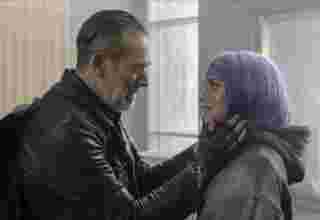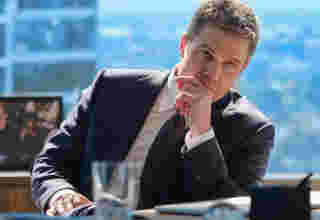
Amazon’s The Lord of the Rings: The Rings of Power series quickly became one of the streaming service’s more popular series. Though the show doesn’t directly follow the plot of a particular novel, it builds off the work of JRR Tolkien. Starting with Tolkien’s established fan base could only help the show as it brings fans into Middle-earth. But The Rings of Power is not the first time people have entered the fictional world through the screen. Tolkien’s works have been adapted many times, but the most famous is Peter Jackson’s film series. The Rings of Power introduces many characters who appear in The Lord of the Rings and The Hobbit films, but the show isn’t directly connected to the films. Though the show seems to have aimed for a similar look to the films, it has a different creative team and is not officially tied to any previous interpretation of Middle-earth. Yet, as both are adapted from the same source material, the two stories fit together fairly well. It’s easy to imagine them being in the same world. With The Rings of Power taking place long before the events in the films, there is room for some inconsistency without it being painfully distracting. And, by providing backstories for central characters like Gandalf, Elrond, and Sauron, the show can enhance rewatches of Jackson’s films.
The series took its time in revealing the Stranger’s (Daniel Weyman) identity. While the name “Gandalf” has yet to be used, it is heavily implied that the Stranger is the same wizard from The Lord of the Rings, with direct quotes from the character and a focus on his relationship with Middle-earth’s smallest creatures. Throughout Tolkien’s lore, Gandalf is one of the few outsiders hobbits accept, though many are still dubious. The show slowly builds his relationship with the Harfoots, the ancestors of the hobbits. By showing this suspicious society learning to trust the wizard, the series explains his connection with the hobbits generations later. Rings of Power specifically focuses on his friendship with Nori Brandyfoot (Markella Kavenaugh), a mischievous young Harfoot with a thirst for adventure.
The description is similar to Frodo Baggins (Elijah Wood) from Lord of the Rings. Frodo, like The Hobbit’s Bilbo Baggins (Martin Freeman), has a longstanding relationship with Gandalf (played by Ian McKellen in the films). Along with Frodo’s friends, Merry (Dominic Monaghan) and Pippin (Billy Boyd), the Baggins descend from a long line of adventuring hobbits, and Gandalf is familiar with this family history. It doesn’t seem like a leap to think that Nori may be the start of it all, including Gandalf’s involvement with the hobbits. By expanding Gandalf’s history with the hobbits (or Harfoots), the show makes his interactions with Frodo and Bilbo more impactful, and it explains why Gandalf chose to bring these characters on his journey in the first place.
Another friendship that gets a lot of time in the show is Elrond’s (Robert Aramayo) with Prince Durin IV (Owain Arthur). The friendship between an elf and a dwarf is reminiscent of Legolas (Orlando Bloom) and Gimli (John Rhys-Davies) in The Lord of the Rings. But it is more than that, as Elrond interacts with Dwarves later in life. Despite the bad blood between the two races, Elrond (Hugo Weaving in the films) welcomes Gimili into his home, as he does with the Dwarves in The Hobbit films. In The Hobbit, Thorin Oakenshield (Richard Armitage) and several of the Dwarves in his company are descendants of Durrin. Gimili comes from this family as well.
By exploring Elrond’s past friendship with Durrin, his later acceptance of other Dwarves despite the rivalry is emphasized. It makes his decision to welcome these Dwarves into Rivendell much more meaningful, given his connection with their ancestor. Elrond serves a relatively small role in the films, but the show gives him more of a spotlight, effectively growing the character. Giving Elrond a history helps to explain his perspective in The Lord of the Rings. And as the series goes on, it could help the audience understand his resistance to his daughter Arwen’s (Liv Tyler) love for Aragorn (Viggo Mortensen).
Once again, the identity of Sauron was a big twist in Rings of Power. While Halbrand (Charlie Vickers) was introduced early, he wasn’t revealed to be the dark lord until the final episode. Many fans had predictions of who Sauron would be, and many were wrong. Unlike the films, Rings of Power gave Sauron a face, making him human, rather than the evil power in The Lord of the Rings. The show depicts his rise to power, while in The Lord of the Rings, he is a sudden threat. In the films, he is a historic evil that most thought to be destroyed, so Rings of Power gives that backstory. The films summarize the events in a prologue. But the show delves into them and offers a deeper explanation of why Sauron is a threat by showing what he’s capable of.
The show’s humanizing of Sauron makes the danger in The Lord of the Rings seem more real to the audience as it gives context to his past. It also shows him interacting with Galadriel (Morfydd Clark in the series). Her initial friendship with Halbrand leads to him tempting her with power when she discovers who he is. And much later, in The Lord of the Rings, Galadriel (Cate Blanchett) is tempted again by the ring. In a moment of weakness, she repeats the words Sauron said to her. Galadriel’s refusal to take the ring makes more sense with the context of the series, and it makes her temptation that much more interesting.
With Rings of Power serving as a sort of history for The Lord of the Rings, there are plenty of connections through the world’s lore. One example is Elendil (Lloyd Owen) and his son Isildur (Maxim Baldry), who are ancestors of Aragorn. Their story plays directly into the significance of Aragorn becoming the king of Gondor. As the show explores these characters, it will allow more fans to understand the history of it all. Incidentally, these characters and their Númenor blood allow Aragorn to live as long as he does. The show explores Númenor’s connection with the Valar and the half-elf, Elros, which explains Aragorn’s extended lifespan.
Rings of Power also shows the history of Khazad-dûm, or Moria, as it is referred to in The Lord of the Rings. The show explains mithril in more detail and explores the origins of the balrog. Connect or not, The Rings of Power enhances The Lord of the Rings by making the lore more accessible to a wider audience. These two depictions of Middle-earth complement each other despite not being tied together in an official capacity. The Rings of Power gives a Middle-earth history lesson to those who are unfamiliar with Tolkien’s writings, and as such, it strengthens Jackson’s interpretation of the world even without a direct link between the two.
[via]







